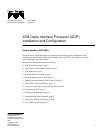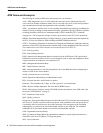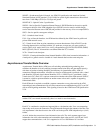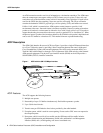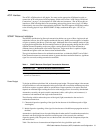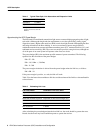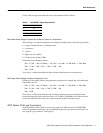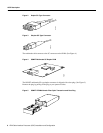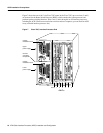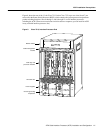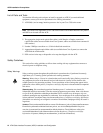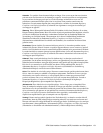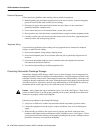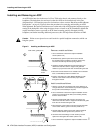
ATM Cable Interface Processor (ACIP) Installation and Configuration 3
Asynchronous Transfer Mode Overview
SONET—Synchronous Optical Network. An ATM UNI specification and American National
Standards Institute (ANSI) standard (T1.105-1988) for optical digital transmission at hierarchical
rates from 51.840 Mbps (STS-N) to 2.5 Gbps and greater.
SONET OC3—Optical Carrier-3 specification.
SSCOP—Service Specific Connection Oriented Protocol. SSCOP Resides in the service specific
convergence sublayer of the ATM adaptation layer. SSCOP is used to transfer variable-length
service data units between users of SSCOP, and provides for the recovery of lost or corrupted SDUs.
SSCS—Service specific convergence sublayer.
SVC—Switched virtual circuit.
UNI—User-to-Network Interface. An ATM interface defined by the ATM Forum for public and
private ATM network access.
VC—Virtual circuit. Point-to-point connections to remote hosts/routers. Each ATM VC has the
following characteristics associated with the VC: peak rate, average rate, cell quota, quality of
service (QOS), AAL mode (AAL3/4 or AAL5), encapsulation type (LLC/SNAP, NLPID, SMDS,
MUX, QSAAL). The VC characteristics are defined when the VC is created.
VCD—Virtual circuit descriptor.
VPI/VCI—Virtual path identifier/virtual channel identifier. ATM virtual connection information. A
virtual path is a generic term for a bundle of virtual channels that have the same end point.
Asynchronous Transfer Mode Overview
Asynchronous Transfer Mode (ATM) uses cell-switching and multiplexing technology that
combines the benefits of circuit switching (constant transmission delay and guaranteed capacity)
with those of packet switching (flexibility and efficiency for intermittent traffic). ATM is a
connection-oriented environment. All traffic to or from an ATM network is prefaced with a virtual
path identifier (VPI) and virtual channel identifier (VCI). A VPI/VCI pair is considered a single
virtual circuit (VC). Each VC is a private connection to another node on the ATM network. Each VC
is treated as a point-to-point mechanism to another router or host and is capable of supporting
bidirectional traffic.
Each ATM node is required to establish a separate connection to every other node in the ATM
network that it must communicate with. All such connections are established using a PVC or an SVC
with an ATM signaling mechanism. This signaling is based on the ATM Forum UNI Specification
V3.0.
Note The ACIP uses PVC connections with AAL5. There is one PVC for each active subscriber
modem. PVCs are created automatically; there is no need for user intervention.
Each VC is considered a complete and separate link to a destination node. Users can encapsulate
data as they see fit across the connection. The ATM network disregards the contents of the data. The
only requirement is that data be sent to the ACIP card in the specific ATM adaptation layer (AAL)
format.
An AAL defines the conversion of user information into cells. The AAL segments upper-layer
information into cells at the transmitter and reassembles them at the receiver. AAL3/4 and AAL5
support data communications. AAL3/4 is supported as of Cisco IOS Release 10.2 and later.



